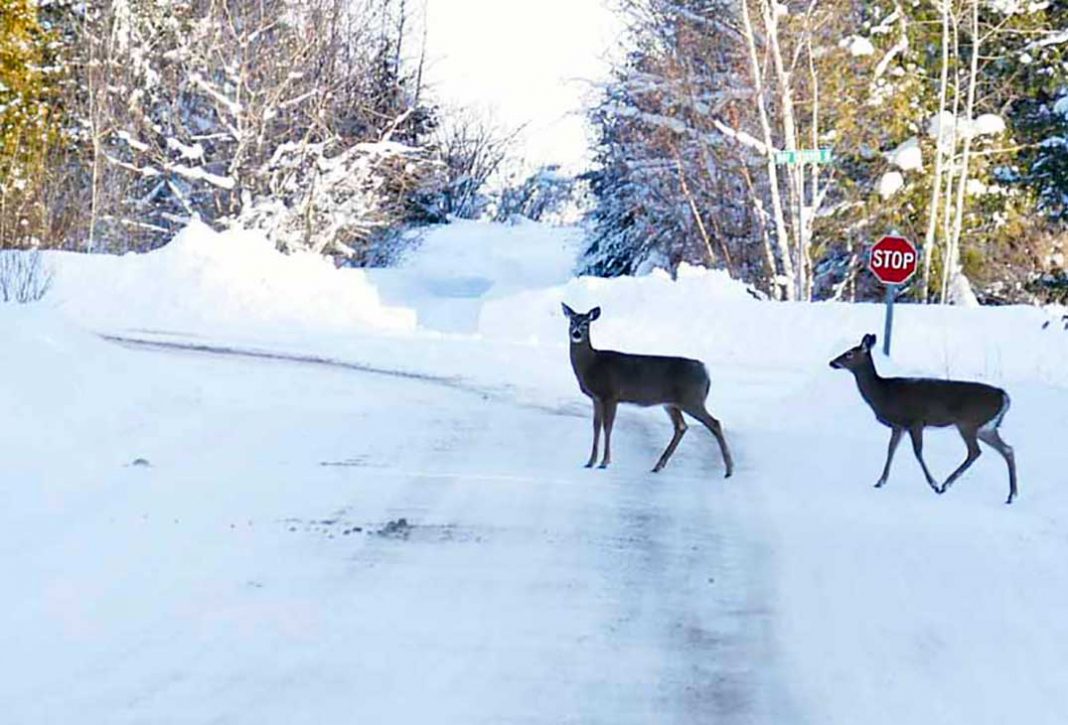Deer Save, MNRF ask Islanders not to supplement natural diet
MANITOULIN—Manitoulin Deer Save continues to urge Islanders to not feed deer anything but its natural cedar browse food source, but for those who insist on supplementing their diet it must be done correctly or it may cause more harm than good.
As has been reported previously, the volunteer efforts of Manitoulin Deer Save, in conjunction with Manitoulin Streams, reconvened this winter to help spread the word that this season’s cold, snow and ice have created a stressful season for the deer. Last week, bulldozing efforts got underway in parts of Manitoulin, creating trails that would allow deer to access fresh browse. Individual volunteer efforts also saw trails broken and browse cut, helping to keep the deer population from starving.
Deer Save volunteer Paul Methner, a former (MNRF) employee through his job as the operations manager at the Blue Jay Creek hatchery, has been involved with Deer Save operations, both as a volunteer and through the ministry, since the 1990s.
“For those people who insist on feeding deer, the recommended diet is a mix of corn and oats (approximately 60 percent oats and 40 percent corn),” Mr. Methner said. However, he added, it’s not recommended, as “it’s an everyday commitment.” To suddenly stop feeding the deer before the spring can mean death.
For those contemplating feeding with deer food it must be introduced into their diet gradually, along with cedar browse, slowly removing the browse until after two weeks or so they’ve moved to straight deer food. But once you start, you must continue with the feed, every day, until spring has arrived. The deer will let you know when they no longer need your help as they simply won’t show up anymore.
Feeding deer a straight corn diet is also a definite no. Deer cannot metabolize corn which gives them diarrhea, dehydrates them and can lead to death.
“Some of the big issues with feeding, despite the commitment, is that you may start off feeding two or three deer but it may end up being 50,” Mr. Methner said, giving his own example of 20 deer he fed all winter long last year that gradually turned into 100 deer. He estimates the cost of this endeavour to have run him about $1,500. “I was buying it in bulk.”
While feeding deer in one’s own backyard is one thing, he worries about the “go-getters” who head into the bush to feed the deer. A storm or two later, that area may no longer be accessible and those deer are suddenly cut off and face certain death.
“That’s why Deer Save efforts encourage people to think about how we can provide better access rather than instituting a feeding program,” Mr. Methner added. “If you can just give deer access to their natural food source, that’s best.”
Mr. Methner warns Island residents that despite everyone’s best efforts, there will be some deer loss by winter’s end.
Some areas of the United States ban feeding deer altogether because of the risk for the spread of disease, such as the feared chronic wasting disease. When feed is being provided, the animals will gather in larger groups than they normally would, thereby spreading disease.
MNRF media spokesperson Jolanta Kowlaski told The Expositor that the ministry has been monitoring snowfall amounts and conditions, but did not have concerns for deer anywhere in the province, including Manitoulin, nor did they expect the winter to have an adverse impact on the herd.
“Deer are naturally adapted to survive winter using stored fat reserves, restricting activity levels and reducing their feeding,” Ms. Kowalski said. “Artificial feeding works against these adaptations.”



